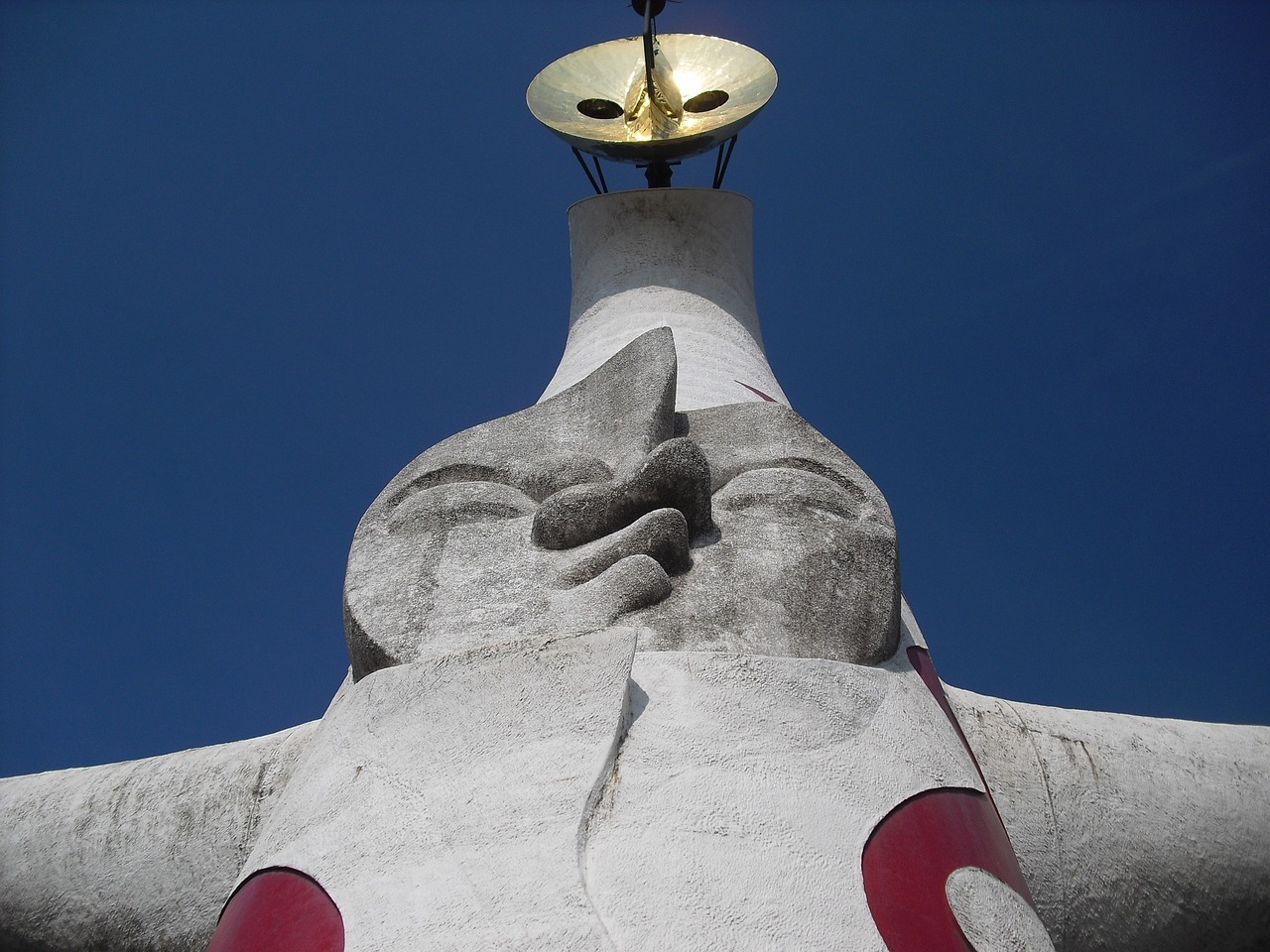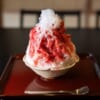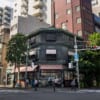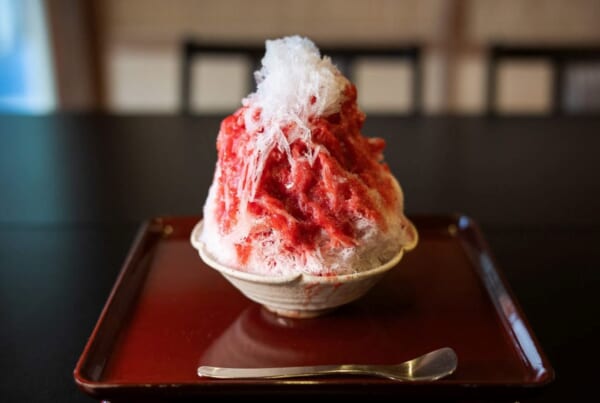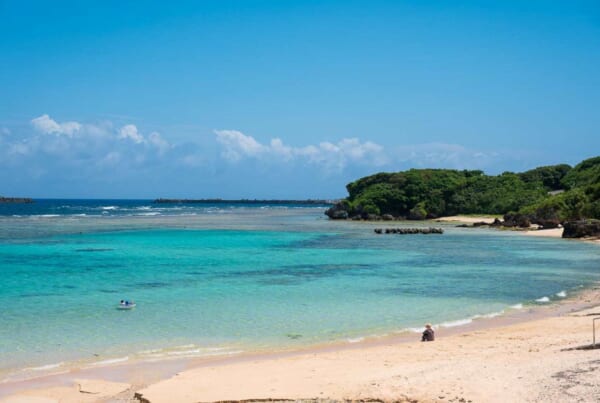Over the years, one of the least wasteful ways I have found to waste my time, has been to head off to an (almost) randomly chosen area of Tokyo and immerse myself in whichever I find of the city’s generous abundance of galleries and museums. I have visited the vast and echoey, the cheerful and bright, the intimate and inviting, the small and ever-so-slightly snobby, and most frequently of all, the free of charge. I always leave, provided I have remembered my glasses, feeling at least a little bit better informed, and quite a bit inspired.
As a relic of the 20th Century myself, I take a particular interest in the artistic and cultural history of that period, so I have chosen for this list artists whose works say something to me about the flow of creative ideas across those years in Japan, as well as the country itself at the time of their creation.
A Single Ray of Brightness (Into the 20th Century)
Seiki Kuroda (1866 – 1924)
Disappointing his parents, but thrilling (and occasionally scandalizing) Japanese art lovers, Seiki Kuroda abandoned his study of law, the purpose of a decade long decampment to France, to take up the brush. Moving from Paris to the artist’s colony at Grez-sur-Loing and embracing plein-air impressionist painting with gusto, Kuroda mastered the skills that would in time see him acknowledged in his native land as “the father of Western-style painting.”
On his return to Japan, Kuroda’s elegant use of color to suggest light and atmosphere, was considered revolutionary, and he became an immediate inspiration to many younger artists. But the real influence of Kuroda’s unconventional European education was felt in ripples rather than great waves, as across the 20th Century Japanese artists chose not to imitate or conform to western styles, but to selectively learn from and utilize whichever elements of them they felt best served their art. A process, it hardly needs saying, that was eagerly mirrored in the west.
Seiki Kuroda’s work forms part of the collection of Artizon Museum, Pola Museum and the Hiroshima Museum of Art.
Hasui Kawase (1883 – 1957)
Under skies that are dark and velvety and bursting with the silence of snow, or shimmering and glinting with the crystalline joy of a fresh spring day, but always marvelously magically blue, Hasui Kawase picked out the beauty of Japan and recorded it with unparalleled clarity. From the 1920s onwards, the shin-hanga (New Prints) master’s depictions of scenic and everyday Japan added western style elements of realism to the centuries-old traditions of ukiyo-e printmaking, resulting in ozone-packed images that seem genuinely alive, absorbing the viewer as fully as the paper absorbed the ink in their creation.
Hasui Kawase’s prints form part of the collections of the National Museum of Modern Art Tokyo and the Tokyo Fuji Art Museum.
Tamako Kataoka (1905 – 2008)
Emerging from technicolor fields of flowers and jaunty forest groves of green and gold, Tamako Kataoka’s blazing red (or sky blue) Mount Fuji(s) are daunting and magical, but at the same time carry an air of cheerful and homey familiarity. Skillful use of this bold but cozy design aesthetic kept Kataoka’s modernist Nihonga (Japanese-style) nature paintings one step away from outright psychedelia, while imbuing them with a vibrant sense of the artist’s joy in art and existence.
Kataoka’s unique sensibilities and fauvist leanings, developed from her originally gauzy pastel-hued domestic scenes, also gave vivid life to her depictions of people, including many portraits of the ukiyo-e artists who inspired her.

Tamako Kataoka’s work forms part of the collection of the National Museum of Modern Art Tokyo, and can be seen in ceramic form at Tsukijishijo Station and Sunshine City, Ikebukuro.
Myth of Tomorrow (Mid 20th Century)
Taro Okamoto (1911 – 1996)
Glowering above the elevated walkway that connects JR Shibuya Station to the Mark City shopping complex, is Taro Okamoto’s sinister but darkly exuberant mural Myth of Tomorrow. Nightmarish clouds and ultra-vivid plasmic tentacles swirl around the painting’s central figure, a starlike human skeleton engulfed in flames, that seems to explode in every direction.
Okamoto’s monolithic reminder of Japan’s painful birth into the atomic age, is a dark twin (having been conceived of simultaneously) to the unfading art-superstar’s best known work, Tower of the Sun. That gentle giant’s three faces continue to stare out over the site of Osaka’s Expo ’70, from where they once issued a celebratory invitation to the world, amid the optimism of Japan’s economic miracle.
Public works by Okamoto can be seen at the United Nations University Plaza in Shibuya, and Sukiyabashi Park in Ginza as well as other places around Japan. The artist’s former home and studio can also be visited in Minami-Aoyama, as well as the Taro Okamoto Museum of Art in Kawasaki.
Tadanori Yokoo (1936 -)
Taking inspiration from everywhere and anywhere, and spreading it generously in his wake, Tadanori Yokoo couldn’t help but absorb Japanese graphic traditions, even as he trod all over them. In his retina-rattling 1960s posters and prints, the Japanese cultural underground burst spectacularly into the streets, where samurai and kabuki actors shared space with astronauts and art deco nudes, often picked out against a lysergic rising sun.
The ultra-prolific artist and designer’s pop-art fingerprints can be found all over modern Japan, and he has designed countless posters, books and record covers, as well as making hundreds of paintings and enjoying a long-lasting collaboration with Issey Miyake.
A collection of 3,000 of his works can be seen at the Yokoo Tadanori Museum of Contemporary Art in Kobe.
Lost Decades (End of the 20th Century)
Tetsuya Ishida (1973 – 2005)
Morbidly sluggish and barely able to breathe, the tragically tormented and isolated figures that live through the empty days of Tetsuya Ishida’s heartbreaking surrealist paintings, are victims of the stifling conformity that the artist saw as endemic to the country of his birth. In the heavy gray air of Ishida’s unsettling images of Japan’s “lost decades,” men and boys are cruelly merged with machinery, and often seem bewildered, terrified, or — worst-of-all — resigned, as powerless to intervene, they watch their own humanity disappear.
Following the artist’s tragic death in 2005, his parents donated 21 of his paintings to the Shizuoka Prefectural Museum of Art, where they form part of the public collection.
Akira Yamaguchi (1969 -)
Akira Yamaguchi’s era-straddling Yamato-e imagery makes explicit, in clean and obsessively-detailed fashion, that the world of today is built (and rebuilt) on the foundations of yesterday. Using centuries old techniques, Yamaguchi presents us with a god’s-eye view of a Japan where old and new inhabit the same physical space, and throngs of people go about their business like the happy inhabitants of a self-made ant farm.
Yamaguchi’s cheerfully buzzing scenes of big city life are a reminder that the forever-in-flux streets of Tokyo, sometimes changed unrecognizably over periods of just a year or two, were walked almost half a millennium ago by the residents of Edo.
When viewed over cosmic timeframes, those impossibly distant-seeming kimono-clad figures are just on the way home from the shops that we are heading to; so we might as well give them a friendly nod as we pass. When we do, Yamaguchi will be observing from his place amongst the clouds.
Akira Yamaguchi’s works form part of the collection of the Mori Art Museum, the Museum of Modern Art Shiga, and can be seen in stained glass form at Nihombashi Station.


